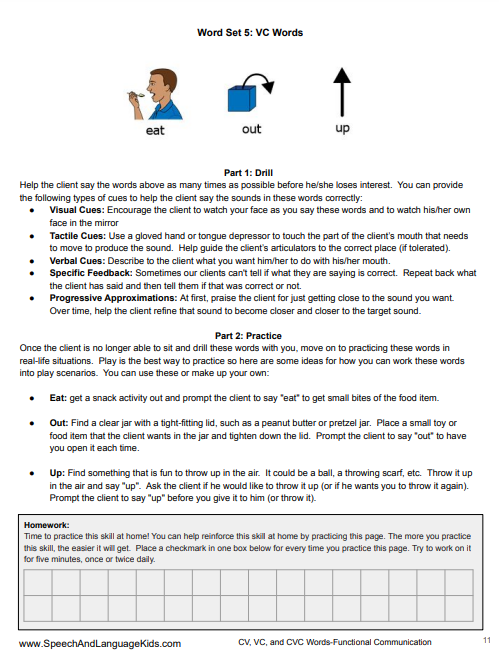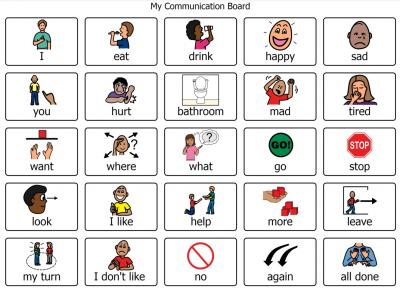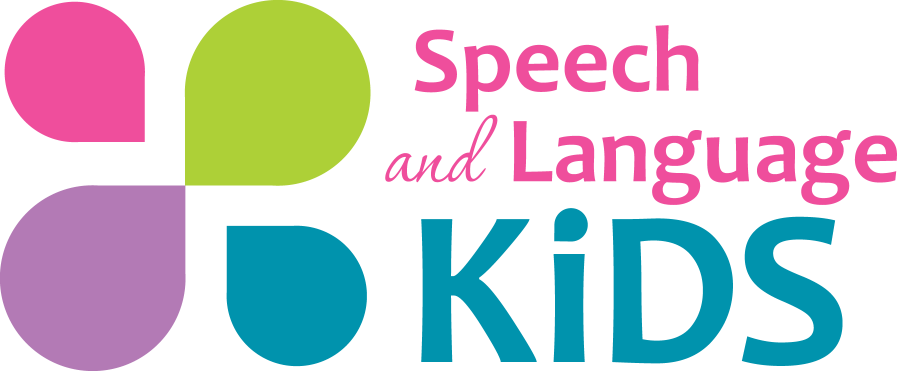Therapy for Non-Speaking Children: How to Boost Functional Communication Skills
Do you know a child with autism who isn’t able to communicate basic wants and needs? Does the child lack the social skills to participate in social interactions? Do you need a guide for how to improve functional communication in a young child with autism?
Well don’t you worry, you’ve come to the right place! I’m going to show you the top four skills to start targeting to improve functional communication in a young children with autism or suspected autism. Let me show you what those four skills are and how to work on them. Click “play” on the player below to hear the entire episode, or scroll down to get the show notes below.
Non-Speaking Therapy 1:
Establishing a Functional Communication System
All children have the right to communicate. No disorder, disease, or physical limitation should be able to take that right away from them. For that reason, it is our obligation to make sure that all children with autism have SOME way to communicate with us. Speaking may be too hard for them so sometimes we need to come up with other ways of helping them communicate. Here’s how we can do that:
Step One: Will Speech Work?
The first thing that we need to consider for a non-verbal or minimally-verbal child with autism is whether or not speaking is real option for them. We can do this by asking the child to imitate basic speech tasks, like saying words or making sounds. If the child is able to say words or make sounds in order to get something that he or she really wants, then we can say that speaking is definitely the best way to go to help that child communicate with us. Speech is always the first option and we would love for all of our students with autism to speak to us. However, some children simply aren’t able to talk right now, but that doesn’t mean that we give up on them and don’t provide them with an alternative. If speech isn’t a viable option for the child you’re working with, move on to step two:
Step Two: Find an Alternative Means
Options for AAC Devices, Methods,
and Systems:
- Gestures/Body Language
When the child uses natural gestures or body language to communicate with those around him. This often happens naturally but may need to be taught if the child isn’t even doing this. - Sign Language
A formal sign language is used where the child forms signs with his hands that convey meaning. These signs are used by the child as well as by the adults who are
communicating with the child. - Object Symbols
Simple objects or small 3D models of objects are glued to cards or a board. The child then touches the object that represents what he wants. This is ideal for children with vision or cognitive problems. - Picture Boards
The child is given a simple board with a selection of pictures. The child touches the picture that represents what he wants. - Picture Exchange
The child hands a picture that represents what he wants to the communication partner.
- Written Messages:
The child writes or types a message on paper or on a computer/screen. - Single Button Voice-Output Devices
The child is presented with a single button. When the button is pushed, a single message is spoken out loud (pre-recorded). - Multi-Button Voice-Output Devices
The child is presented with a device that contains several buttons. Each button represents a different communication intent and the student pushes the button to hear the message. - Dynamic-Display Voice-Output Devices
The child is presented with a device that has a touch screen full of buttons. When the child pushes a button, a message is spoken or the entire screen changes to present different buttons based on the one pushed.
Step Three: Teach the AAC Method
Once you’ve found what works, use these steps to teach it:
- Get Familiar with the Child’s Device
- Model use of the device around the child
- Encourage the child’s exploration of and attempts to use the AAC
- Have the device present at all times
- Set up opportunities for the child to use the device
- Get all adults on board
Non-Speaking Therapy Part Two:
Following Simple Directions
Click Here to Learn More about Teaching Following Directions
- Make a list of common directions given to the child throughout the day
- Take/Make pictures of those directions
- Teach each direction individually
- Work those directions into daily routines using picture cues
- Fade the picture cues
- Work on following directions with more than one step
Non-Speaking Therapy Part Three:
Improving Imitation Skills
- Start with imitation of easy, whole-body actions. Reinforce with highly preferred objects or activities
- Work on more complex actions like fine motor, speech/communication, or play (depending on what the child needs to work on)
- Work imitation into daily, functional activities
Non-Speaking Therapy Part Four:
Basic Turn-Taking and Requesting
- Help the child take turns with adults by helping the child say or use AAC to communicate “my turn” when it’s the child’s turn
- Increase the amount of time that the child will tolerate the adult having the item and get the child to communicate “my turn” independently
- Introduce turn-taking with another child including handing it over when the other child says “my turn” (or saying “in a minute” for older children)
- Work on games that require each player to wait for a turn and work on knowing whose turn it is

About the Author: Carrie Clark, MA CCC-SLP
Hi, I’m Carrie! I’m a speech-language pathologist from Columbia, Missouri, USA. I’ve worked with children and teenagers of all ages in schools, preschools, and even my own private practice. I love digging through the research on speech and language topics and breaking it down into step-by-step plans for my followers.
Connect with Me:
Podcast: Play in new window | Download | Embed
Subscribe: Apple Podcasts | RSS





Any suggestions on how to help a child use words instead of whining or growling when he does not like something?
If it’s a young child, Daniel Tiger has a great song about using your words instead of growling:
http://www.pbslearningmedia.org/resource/aebdb366-08f8-42d4-a1e6-dc88fb9573a8/use-your-words-and-say-how-you-feel-song-daniel-tigers-neighborhood/
Outside of that though, you’re just going to have to teach him explicitly what to say instead and the provide him with reminders and visuals to help him remember to use those words when he gets upset. You can also use social stories or video modeling to show them how to do it.
Love your resources, very useful!
Any advice on how to help an echolalic 6 year old to communicate rather than just repeat what is being said ? Thanks
Yes! Try this link: https://www.speechandlanguagekids.com/echolalia-when-children-repeat-what-you-say/
Hi my son is 6 year old with autism he has minimal speech skills he communicates with we by showing the item he wants how can I further more help him to be able to speak
Hi! That’s great that your son is showing you items he wants! You should work with a speech-language pathologist directly who can help you identify the best next step for him!
Carrie
My 3 year old son is having difficulty to understand potty training and he is not improving his speech still talking a lot of babbling and single words . His social skills are fine but not interested in playing with his age group children attracted towards adults more how can I help him
Hello! I definitely recommend that you work with a speech-language pathologist in your area who can determine what the best course of action is. I cannot assess and treat via online!
Hi Carrie useful information about echolalia thanks for sharing. My son 4 year old some time he replied what I asked some time he repeated the same how to improve his communications need suggestions
You’re welcome! I hope the steps in this article will be of help to you in working with him. If you still need more assistance, a speech-language pathologist in your area or in your local school district will be able to help determine exactly what he needs!
Hi Carrie! I am a special instructor for early intervention and have been loving your info. I have been making photos of favorite foods for families to place on the refrigerator for the child to point or hand when they want something. I have one little girl who has responded quite well to this, but she has begun using it as a game with her family – pointing and waiting for their praise. Any ideas for how to help with this? I suggested that they keep the photos put away until it is meal time and then use them for requesting, or, that they work on helping her to learn what no means as they would a child using words to ask for things. I haven’t seen this in action so I probably also need more information. Thanks!
Hey there! We never recommend putting away a child’s communication system because that would be like turning off his/her voice. Instead, we do just what you said and allow them to use that as a means to communicate and connect with her family (she probably doesn’t have another way!) and then just kindly let her know when those things aren’t available or aren’t a choice. Just like a child who is speaking (like you said). It’s so important to acknowledge those communication attempts, even if she’s not using them at the correct time or in the appropriate way. We want to encourage her to connect in whatever way she’s able to right now!
My 3year old hasn’t started talking yet. He does a lot of baby talk loves singing and say mommy and daddy. I don’t know who to take him too between a pediatrician and a speech therapist. We are based in South Africa and it seems little is known about this
Hi, Bongi-
Here are a few resources Carrie has on late talkers that may be of some help. Please let us know if you need anything else.
I have a student whose MID, ASD and Non verbal. Can you suggest any programming or ideas for growth or communication? Pictures don’t work, he loves Music.
Hello, Shelley!
Thank you so much for reaching out. Unfortunately, we get a ton of questions every day about how to solve specific speech/language problems. Since we have such a small staff, we aren’t able to answer every question that comes through on the website, social media, or via email. If you are a parent, we suggest you reach out to a local speech-language pathologist who can work with your child directly and answer your question.
If you are another speech-language professional, we have created a membership where we pay a full staff to answer questions like this on a regular basis. We would be more than happy to answer your question inside the membership program. We’re able to answer more questions in here because we have a full library of questions that we’ve already answered so our staff can either link you to the answer if it exists, or write you a custom response if needed. We’d love to see you inside the membership!
Click Here to Become a Member: https://www.slpsolution.com/pediatric-signup/